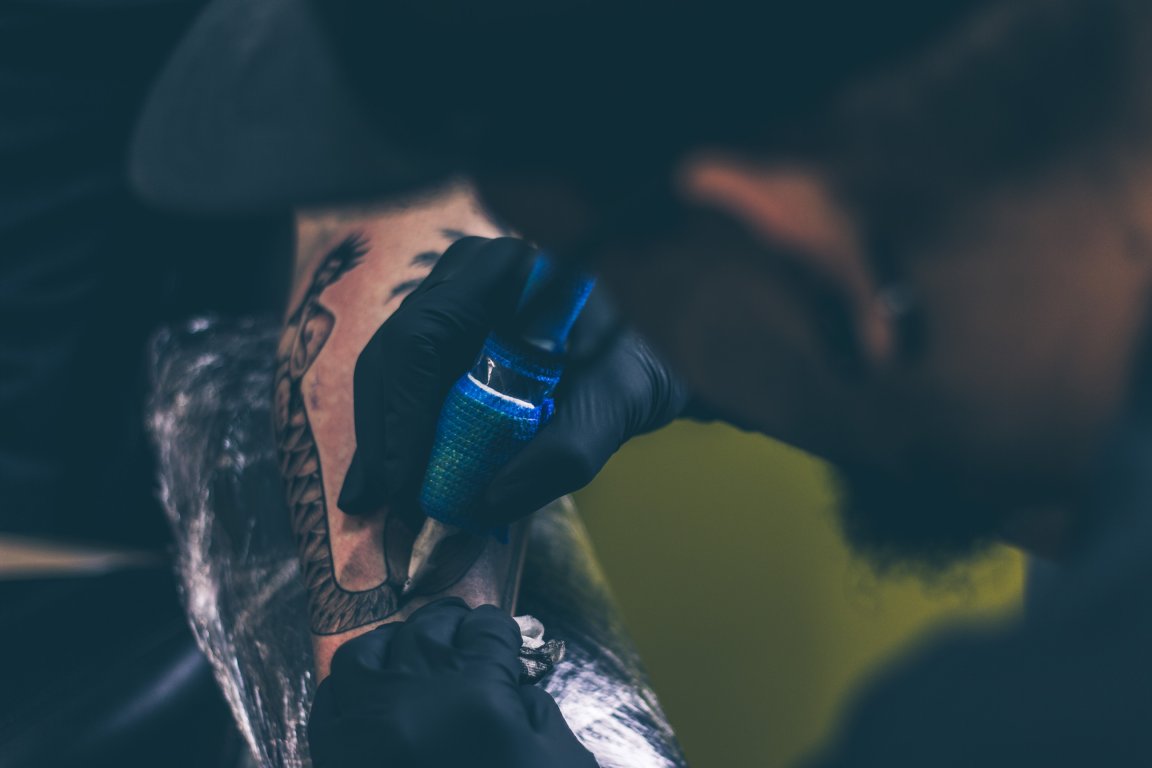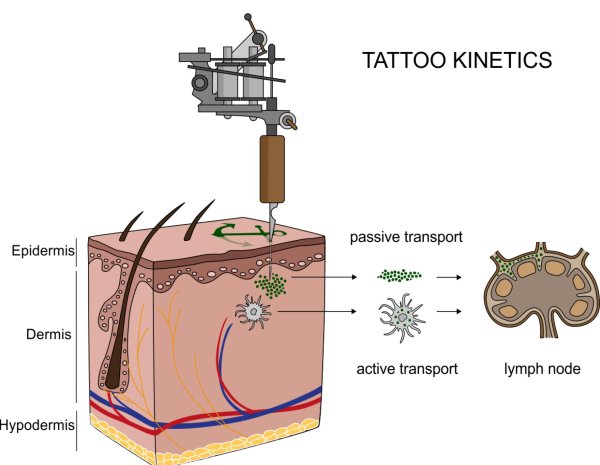
Chemical Compositions
First of its kind research by scientists in Germany and the European Synchrotron Radiation Facility (ESRF) in Grenoble, France has revealed that tattoo ink leaves behind micro and nanoparticles that travel inside the body. The scientists conducted an in depth characterization of the ink pigments in a lab experiment involving tattooed tissues. The hazards generally associated with tattoos are to do with the use of needles, but this research implies the circulating ink particles could pose risks, too.
The findings, published in the journal Scientific Reports, demonstrated how these elements from tattoo inks — organic and inorganic pigments, as well as toxic element impurities traveling as micro and nano particles — actually reach the lymph nodes, a key component of the body’s immune system.
“We already knew that pigments from tattoos would travel to the lymph nodes because of visual evidence. The lymph nodes become tinted with the color of the tattoo. It is the response of the body to clean the site of entrance of the tattoo,” lead author and ESRF visiting scientist Bernhard Hesse explained in a press release. “What we didn’t know is that they do it in a nano form, which implies that they may not have the same behavior as the particles at a micro level. And that is the problem—we don’t know how nanoparticles react.”

Checking for Adverse Effects
While most tattoos contain organic color mixtures, they can also contain preservatives and contaminants such as nickel, chromium, manganese, or cobalt. The most common ingredient in tattoo ink is carbon black, followed by titanium dioxide (TiO2) — a compound also used in food additives, sun screens, and paints. TiO2 has been associated with delayed healing, skin elevation, and itching in the case of white ink tattoos.
However, there’s a lot we don’t yet know about the potential impurities in tattoo ink mixtures. The researchers further investigated using two ESRF beamlines called ID21 and ID16B, which revealed micro and nanoranges of TiO2 in the tattooed skin and the lymphatic environment. Only the smaller particles were transported to the lymph nodes, but those appear to be enough to cause chronic enlargement and lifelong exposure.
“When someone wants to get a tattoo, they are often very careful in choosing a parlor where they use sterile needles that haven’t been used previously. No one checks the chemical composition of the colors, but our study shows that maybe they should,” ESRF scientist Hiram Castillo, one of the study’s authors, said in the press release.
This research is important, especially with the development of advanced, tattoo-based technologies. Moving forward, the team plans to study more subjects that experience adverse effects from tattoos to establish possible links with the chemical and structural properties of the color pigments used.